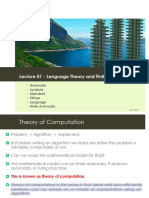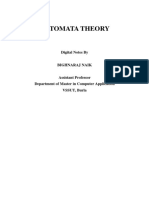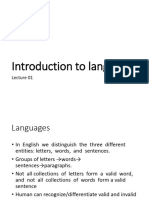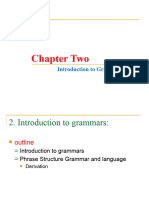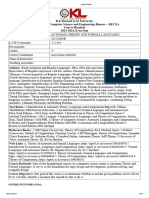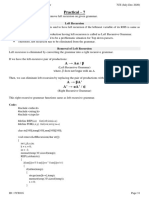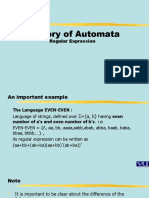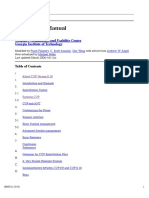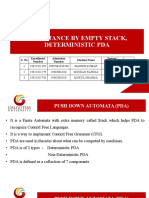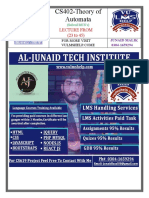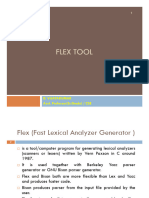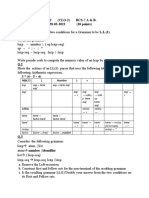0% found this document useful (0 votes)
25 views4 pagesLanguage
The document defines languages in the context of automata, explaining that a language is a set of strings formed from a specific alphabet. It outlines rules for useful languages, provides examples of languages, and introduces the concept of set-formers to define languages. Additionally, it discusses grammar as a set of rules for generating strings in a formal language without describing their meaning.
Uploaded by
anandrajCopyright
© © All Rights Reserved
We take content rights seriously. If you suspect this is your content, claim it here.
Available Formats
Download as DOCX, PDF, TXT or read online on Scribd
0% found this document useful (0 votes)
25 views4 pagesLanguage
The document defines languages in the context of automata, explaining that a language is a set of strings formed from a specific alphabet. It outlines rules for useful languages, provides examples of languages, and introduces the concept of set-formers to define languages. Additionally, it discusses grammar as a set of rules for generating strings in a formal language without describing their meaning.
Uploaded by
anandrajCopyright
© © All Rights Reserved
We take content rights seriously. If you suspect this is your content, claim it here.
Available Formats
Download as DOCX, PDF, TXT or read online on Scribd
/ 4










